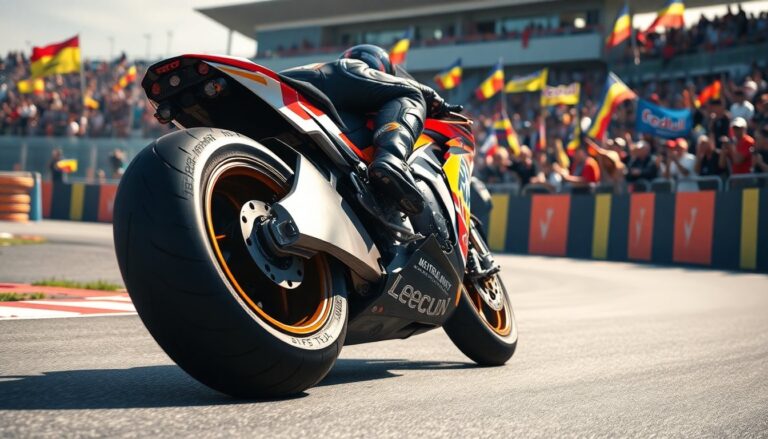Argomenti trattati
In the thrilling conclusion of the MotoGP season at Valencia, Alex Marquez faced significant challenges, dropping from a promising second place to a disappointing sixth. The race, characterized by high stakes and fierce competition, presented unforeseen difficulties for Marquez, primarily related to the performance of his rear tyres.
Starting from the front row, Marquez demonstrated strong initial speed, quickly securing second place behind leader Marco Bezzecchi. However, as the laps progressed, his momentum faltered, raising questions about the reasons behind his rapid decline in performance.
Challenges faced during the race
Marquez attributed his struggles to excessive tyre degradation and unsettling vibrations, which he identified as significant obstacles to maintaining competitive speed. Despite his efforts to analyze the situation, he expressed uncertainty regarding the underlying causes of these issues. This ambiguity surrounding his tyre performance left him grappling with a loss of pace that he could not mitigate.
Initial success and subsequent decline
Initially, Marquez’s performance was commendable; he maintained his position in second place and was well-positioned to contend for a podium finish. However, as the race unfolded, the grip from the rear tyre diminished, leading to a gradual decrease in speed. This degradation hindered not only his ability to advance but also made it challenging to fend off competitors gaining on him.
As the laps dwindled, Marquez struggled to maintain his position, ultimately finishing in sixth place. This outcome starkly contrasted with his earlier aspirations for a podium finish, underscoring the unpredictable nature of racing.
Insights from fellow competitors
Meanwhile, Marc Márquez and the Ducati Lenovo Team showcased an impressive performance at the Spielberg circuit, securing their sixth consecutive victory. This success highlights the contrasting experiences of competitors throughout the season. Marc, who started strongly, overtook Bezzecchi after a fierce battle, demonstrating the critical importance of strategy and tyre management.
Different experiences on the track
Francesco Bagnaia, another notable competitor, encountered his own challenges during the race. Despite a strong start and holding a promising position, he ultimately finished eighth after struggling with rear-end support. Bagnaia’s experience further illustrates the necessity of consistent performance throughout the race.
Understanding the dynamics of tyre wear and management is crucial for all riders, as evidenced by the contrasting outcomes for Marquez and his rivals. Bagnaia’s reflections on his performance highlighted a common struggle among riders regarding tyre degradation, which can drastically influence race results.
Looking ahead
As the season concludes, Marquez’s experience in Valencia serves as a reminder of the unpredictable challenges inherent in professional motorcycle racing. The interplay of tyre performance and rider strategy plays a pivotal role in determining race results. Looking forward, the Ducati Lenovo Team aims to maintain their dominance as they prepare for upcoming races, with Marc Márquez leading the charge.
Marquez’s reflections on this race will undoubtedly shape his approach in future competitions. As he continues to analyze his performance and adapt to the demands of the sport, fans and competitors alike will be eager to see how he rebounds in the next season.

